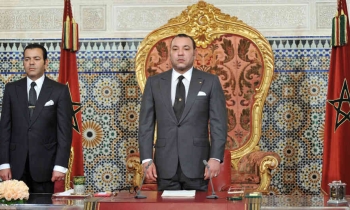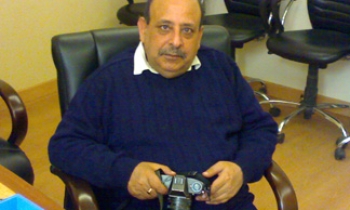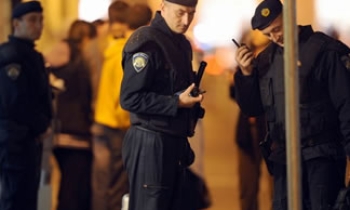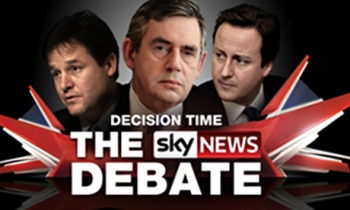They may have graphic depictions for anything under the sun, but not even the best cartoonists could have illustrated the type of fury that would result from the Jyllands-Posten Muhammad cartoons’ controversy. The Muslim world is incensed.
Passions are overflowing. Protesters are igniting embassies with flames. Effigies are getting burnt and stomped on. Smoke bellows out of city centres.
United Nations Secretary General Koffi Annan has tried to douse the flames with a few statements - to no avail. Even the ever peace-preaching South African Archbishop Desmond Tutu has failed to bring passions to manageable levels. It may be for the wrong reasons but the cartoonist is becoming known.
The cartoonist is front page material and headline news after being stuck in the middle of newspaper pages for centuries. Interest has shifted from the cartoons themselves and the resultant carnage that has resulted from their publication, to the work of cartoonists and their methods.
The "Mohammad cartoons controversy" really started in September last year when a Danish newspaper Jyllands-Posten ("The Jutland Post") published about 12 editorial cartoons, some of which were about the Islamic Prophet Muhammad. Preceding this publication, a few reports of intimidation of critics of Islam had been reported. The paper was perhaps trying to take a stand against what they saw as censorship through physical threat. Accompanying the cartoons was an attempt at putting the cartoons into context by the paper’s culture editor, Flemming Rose. According to the online research site wikipedia, she commented that, "The modern, secular state is rejected by some Muslims. They demand a special position, insisting on special consideration of their own religious feelings". The paper outlined that it was not friendly to that state of affairs and so they were publishing the cartoons as a means of paving way for uncensored information. The Muslim community in Denmark protested, outlining that the caricaturing of Muhammad was not respectful of their cultural sensitivities, and that it was both insulting and blasphemous to caricature Muhammad, let alone in what they saw as an overtly demeaning manner.
On 30 January 2006, the newspaper reacted to the protests by offering an explanation and an apology, "In our opinion, the 12 drawings were sober. They were not intended to be offensive, nor were they at variance with Danish law, but they have indisputably offended many Muslims for which we apologise" said the paper and the Muslim community did not accept that. Apart from arguing from a cultural and religious position, they also saw this publication as the climax of a rising anti-ethnic minority and ultra rightist fervour sweeping across not just Denmark but other Scandinavian countries as well.
As the issue developed, the Danish Prime Minister refused to meet some ambassadors from the Muslim world over the issue. Thus, the Muslim world switched to second gear as a number of Imams (Muslim clerics) went around the Middle East canvassing support for their campaign. A few newspapers re-printed the cartoons. Editors who approved the publishing of the cartoons lost jobs. Journalists were arrested across the Muslim world for even reporting on the story. Newspapers which published the cartoons were closed. In the wake of all this, Danish embassies are torched in Beirut, Lebanon and Tehran, Iran. Tensions continue with different protests taking place across the world.
This scandal, if anything, has proved the critical role cartoonist’s play in a newspaper, despite their anonymity and relative obscurity.
In the South African newspaper Mail & Guardian the cartoonist Zapiro produces a cartoon, which depicts the cartoonist’s view of himself/herself or atleast the world’s view of the cartoonist in light of all these recent events. In the middle of the page is an old scruffy-looking man with a sagging belly and nerdy looks. He holds a brush and pen in one hand and a big drawing pad in the other. He does not look like a man who could hurt anything, let alone anyone. Above him, Zapiro writes in thick letters, "Weapon Of Mass Destruction". The cartoonist may not be the weapon of mass destruction that Zapiro says he/she is but The Guardian Editor Mike Mothibi is quick to explain that the cartoonist is very important to a newspaper. "The cartoon usually gives a visual comment. He is a satirist. He is just like a columnist". He says as an editor, his contact with the cartoonist is not based on day-to-day consultations since they usually establish from the beginning what would be relevant to the paper and what would not work. "The cartoonist works to conform with the broader vision of the paper. He is not just a joker. He infuses satire into events and gives them a fresh but engaging and mind-provoking look".
While the scandal rages on, in keeping with the secrecy surrounding cartoonists, the real culprits’ the cartoonists who produced these cartoons are not even mentioned.
One anonymous cartoonist says that because of their use of satire, some subjects of their cartoons may be offended and thus the need to remain anonymous. It is not uncommon to find only a few journalists in a newsroom who happen to know the name of the paper’s cartoonist. "We keep ourselves in the background because being known would not necessarily improve our work or conditions of work. On the contrary, it may destroy us," says the cartoonist.
On a normal day at Mmegi/Monitor, a soft-spoken man with a boyish face walks into the newsroom and sits at the far end. He grabs an A4 size paper and sometimes a few photos for visual reference.
He puts his elbows on the table, shielding his work-in-progress jealously from passers-by. He does not talk. He firstly starts the outline with a soft pencil and then strengthens the lines with a drafting pen. He drafts for about 30 minutes. When he is finished, he rubs the pencil guidelines and lifts his work to have a proper look. When he has satisfied himself, he signs at the bottom of the cartoon, Selefu’ in slanted letters. At the most, Selefu is in the office for an hour and usually keeps the lowest of profiles during the entire time. "We prefer to be anonymous because otherwise we could become targets of abuse because of the way we handle our material," Selefu explains.
However, arguments abound as to the numerous potential flaws that plague political cartooning. Some argue that by utilising pre-existing symbolism to convey their point, cartoons are thus well received when and because they support pre-existing values. In other words, cartoons basically may inspire dialogue but it is a dialogue set within specific parameters. This means that although a cartoon can posit an idea foreign to the mainstream, the cartoonist by virtue of using the mainstream apparatus to posit this idea cannot be expected to help the new idea.
For example, caricaturing ethnic minority groups in different countries relies heavily upon some stereotypical and mostly physical traits, therefore, it becomes difficult for the cartoon to sell the idea that he/she is working to overturn the marginalisation of minorities. In that sense, cartoons "have tended not to confront and to challenge but rather to reinforce and build a priority beliefs, values and prejudices", as American media analyst Fischer wrote.
The other possible dangers cited are that cartoonists are not bound by the rules that guide journalism. It has been reported that a European Network Against Racism 2004 research found that a disproportionate amount of editorial space was devoted to negative reporting on ethnic minorities in many European countries including Denmark. Could the cartoons be just an extension of the prejudices that already exist? Many Muslim critics would say so.
Two of the cartoons in this scandal have caused the worst harm according to some. One features presumably Muhammad, whose brain is a bomb connected to a fuse, which is busy burning out. The other features him standing on a cloud looking at a long queue of what is presumed are suicide bombers. He exclaims, "Stop, Stop, we have run out of virgins!" This is meant to allude to the rewards promised martyrs.
"Of course the cartoonist who drew those cartoons hates Islam. You can tell," admits Selefu
"I do understand that cartoons could upset people they are about. But we are not here to provoke, we just satirise. We make things humorous so they can be easily digested by the public. We make light of serious situations," he adds. If the Muhammad cartoons have proved anything, it is perhaps, that the cartoonist sometimes makes "too light" of too serious a situation.









